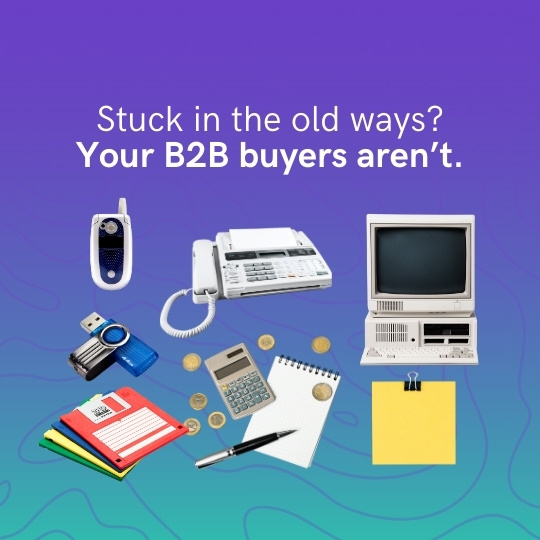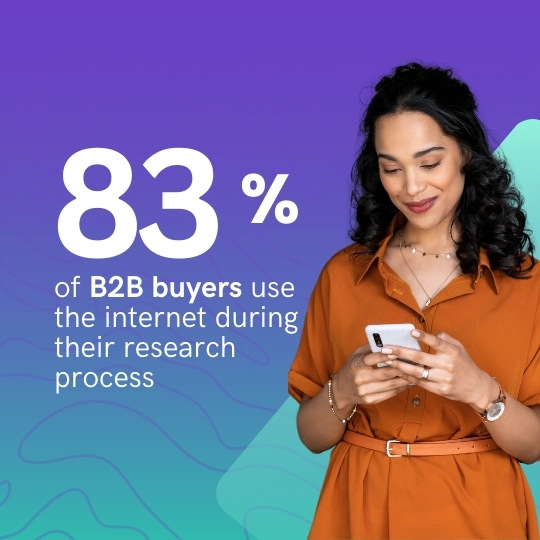The evolution of B2B eCommerce: Why it’s time to go digital
Explore how B2B eCommerce has transformed from manual methods to digital solutions, and why embracing this shift is crucial for business success.

B2B eCommerce has come a long way. Remember the days of endless phone calls, fax machines, and sifting through piles of paperwork? If you’ve been managing your B2B sales with manual processes, you know it can be a real headache. But just as consumers have moved to online shopping, B2B buyers now expect the same smooth experience when making their business purchases.
So, if you’re still relying on Excel sheets and emails to manage orders, it’s time to rethink your approach. Let’s dive into why going digital is not just a good idea—it’s essential.
From paperwork to pixels
Not too long ago, B2B transactions were slow and clunky. Businesses relied on manual processes like phone orders, faxed documents, and stacks of paper. A typical small business owner or a sales agent’s day involved chasing down orders, updating handwritten notes and spreadsheets, and making follow-up calls. This wasn’t just time-consuming; it was a recipe for errors and miscommunication.
Then came the digital wave. Just as B2C eCommerce took off, B2B buyers started demanding a better way to do business. They wanted quick, efficient, and easy-to-use platforms—just like what they were used to when shopping online as consumers.

Moving away from manual processes
Still to this day many businesses believe their customers prefer using Excel sheets, PDFs, and email to place orders. On the surface, these lo-fi tools may seem convenient. But think about it from your customer’s perspective: locating your latest product list could mean digging through an inbox, a cluttered desktop, or even different devices.
Once they’ve finally opened the file, they face a series of hurdles:
What did we order last time?
What are the current prices and available sizes?
Is this the latest version of the catalog?
What are the ordering conditions and currency rates?

It’s a cumbersome process that leaves a lot of room for confusion and mistakes. Imagine if you had to place your orders this way—sounds frustrating, right?
Discover how Swedish brand Buddy Pet Foods transitioned from manual processes to full B2B automation, achieving a 68% annual revenue growth
The current state of B2B eCommerce
Today B2B eCommerce is booming. The European market is projected to reach a GMV of over 1.8 trillion U.S. dollars.—far outpacing the B2C market. But despite this growth, many businesses are still stuck in the past, using outdated methods that frustrate their customers and hold back their growth.
Here are some eye-opening stats that show why it’s time to take B2B eCommerce seriously:
73% of B2B buyers are now millennials. They expect a smooth, digital buying experience like what they get from their favorite consumer brands.
89% of B2B researchers use the internet during their research process, often starting their journey on a supplier’s website.
50% of B2B buyers use mobile devices to research and make purchases, so a mobile-friendly platform is no longer optional.
80% of B2B sales interactions between suppliers and buyers will happen in digital channels by 2025.


83% of B2B buyers prefer placing orders or making payments through digital channels, underscoring the need for B2B eCommerce solutions that offer a seamless online buying experience.
84% of B2B buyers say it takes too long to get information back from the supplier.
90% of B2B buyers who report a superior mobile experience are likely to buy again from the same vendor
The B2B eCommerce market in Europe is expected to grow steadily, with the Gross Merchandise Value (GMV) projected to reach over 1.8 trillion U.S. dollars by 2025.
Why B2B eCommerce should be like B2C
So, why does this matter to you? Because B2B buyers are no longer willing to deal with outdated processes. They want a buying experience that’s fast, easy, and self-service—just like when they’re shopping for themselves. Here’s why adopting a B2C-like approach to your B2B eCommerce can be a game-changer:
- Customer expectations have changed Today’s buyers are used to the convenience of online shopping. They want a B2B experience that’s just as simple—easy navigation, personalized recommendations, and a quick checkout process.
- Save time and reduce errors Automating your B2B eCommerce processes can save you hours of manual work and reduce costly errors. No more chasing down orders or dealing with mismatched spreadsheets.
- Scale effortlessly A digital platform allows you to scale your business without breaking a sweat. Manage more products, customers, and orders from a single system without hiring more staff or investing in complex tools.
- Make smarter decisions Digital platforms provide insights you can’t get from paper or Excel files. Track customer behavior, monitor inventory, and make data-driven decisions to grow your business.
How to kick-start a B2B eCommerce business in 7 easy steps: Guide 2024

The future of B2B eCommerce

Going digital isn’t just a trend—it’s the future of B2B sales. Companies that embrace this change will be better equipped to meet the needs of a new generation of buyers, boost their sales, and grow their businesses.
If you’re still using manual methods like paper orders or Excel files, it’s time to upgrade to a modern B2B eCommerce platform. Not only will it make your life easier, but it will also give your customers the smooth, digital experience they expect.
Conclusion: Why you should care
In a digital world, sticking with manual processes is like using a typewriter in an age of smartphones. B2B eCommerce offers a faster, easier, and more scalable way to do business. By adopting a digital platform, you can not only keep up with the competition but also set yourself up for long-term success.
Ready to make the switch? Explore how modern B2B eCommerce platforms can revolutionize your business and give your customers the experience they deserve.


